Test ATC SM75-150
mid-dome
Copyright 2017 © Troels Gravesen
Two- and three-inch midrange domes were highly
popular in the Eighties and both SEAS and Vifa had their go at it. I
tried the Vifa 3" dome back then and never liked it much. Dynaudio had
the D52 and -54 mid-domes and used them extensively in their commercial
products. Why they have gone out of fashion is a good question, maybe
because 3-ways generally got out of fashion and thanks to D2905 and
other excellent dome tweeters, 2-ways took over although never able to
deliver the same smooth transition between a 6" or an 8" midbass driver
and the dome. Having a middome adds considerably to cost and crossover
complexity.
Today we see a couple of 2" and 3" domes from China and rather recently
reintroduction of 3" domes from ScanSpeak. Large midrange domes are
claimed rocking in the magnetic gap due to the single suspension, but
I've never seen any proof of this - and it would probably be very
difficult to do that test. Maybe double laser interferometry could shed light on
the issue, but until now it remains unsubstantiated claims. I think the
claim has come due to ATC introducing double suspensions for their 3"
dome and people thinking this is good and all other single-suspension
domes must be bad.
One of my friends lend me his single ATC-SM75-150 dome for testing and here are my results. Would be nice to have two samples, but what I found is well in accordance with other tests of the same dome.
The good question is what a 3" dome has to offer
against a lot of really good 4" cone drivers available today? Wouldn't
the ScanSpeak 12MU do just as well? Not to forget the price, because a
lot of good 4" drivers come at 25-50% price of the ATC dome. Only
available source of this dome appear to be Wilmslow/UK @ 387 £. Not
cheap at all. You can get two AudioTechnology 15H52 middrivers for the
price of a single ATC dome! Unfortunately I do not have two of this to
test in a classic 3-way and evaluate against e.g. AT 15H52. I'm almost
glad I don't, because it takes a damn lot of work to do so, and we may
end up thinking we compare apples and pears. Two ways of doing the same
thing - and in the end a matter of taste. Who knows.
I've always found it strange to combine two 15" drivers with a single 3"
dome as done by ATC in their larger studio monitors. Despite a fairly
low point of crossover there must be some noticeable characteristics
from the transition of sound propagating from some 1600 cm^2 membrane
area to a single small 44 cm^2 dome. This is one huge transition!
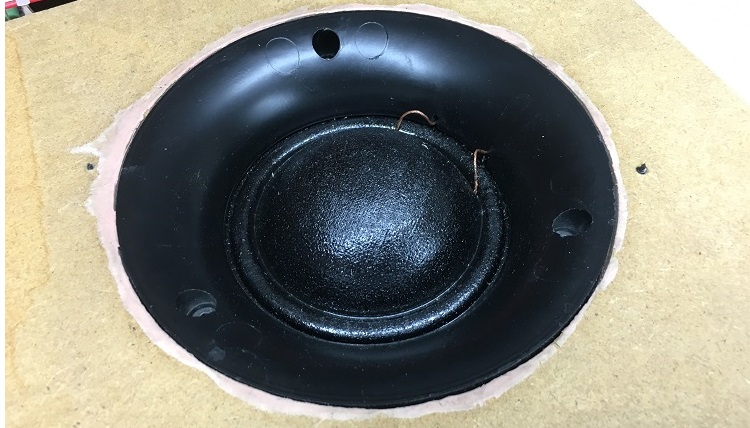
The ATC SM75-150 is a chunky beast of 7 kg due to a massive motor
structure.
As can be seen, double suspensions secure stable positioning of voice coil in magnet gap.
Measurements
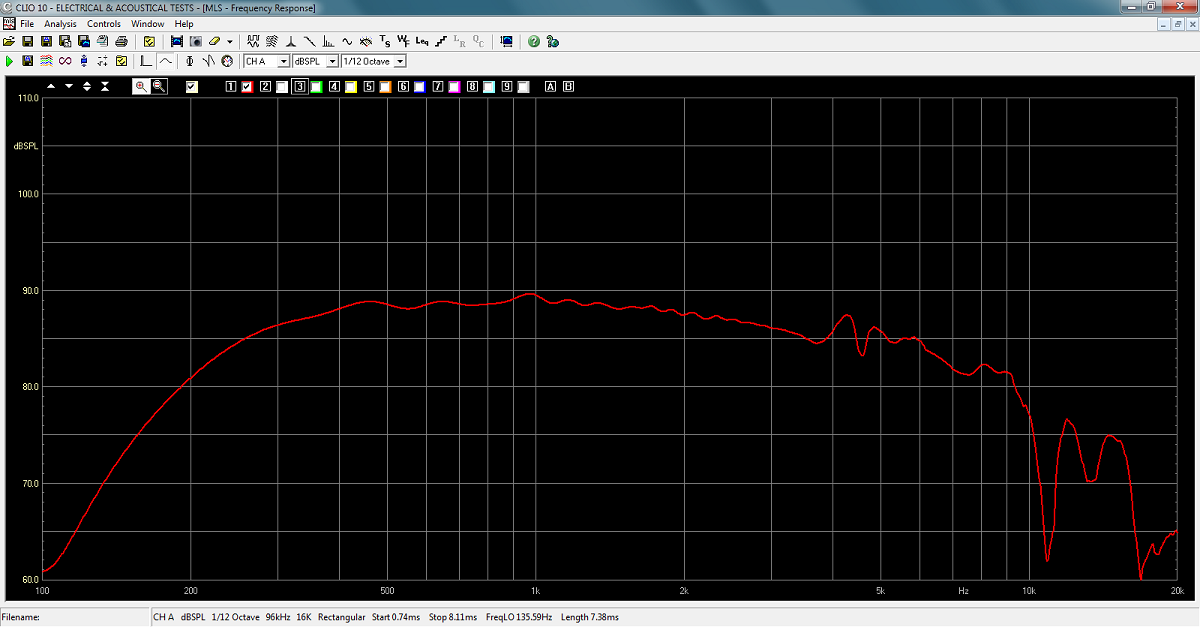
Above frequency response measured at 0.25 meter distance, normalised for 1 meter/2.8 volts. Baffle 60 x 100 cm, driver placed 40 cm from top. Sensitivity around 89 dB/2.8V. This is a 16 Ohm driver (Re 12.2 Ohm), so sensitivity is really good. Now, this is an unusual smooth frequency response, all the way from 300 Hz to around 3.5 kHz. Some break-up modes appear around 4.5 kHz. More on this from the cumulative spectral decay plots below. Based on simulation it seems a 2nd order high-pass filter produce a 4th roll-off, and at the top a true 2nd order low-pass filter can be achieved. This is an easy driver when it comes to crossover construction and overall implementation. At least from simulation from the large baffle. How the driver behaves on a narrow baffle I can't tell. Probably not as nice as this.
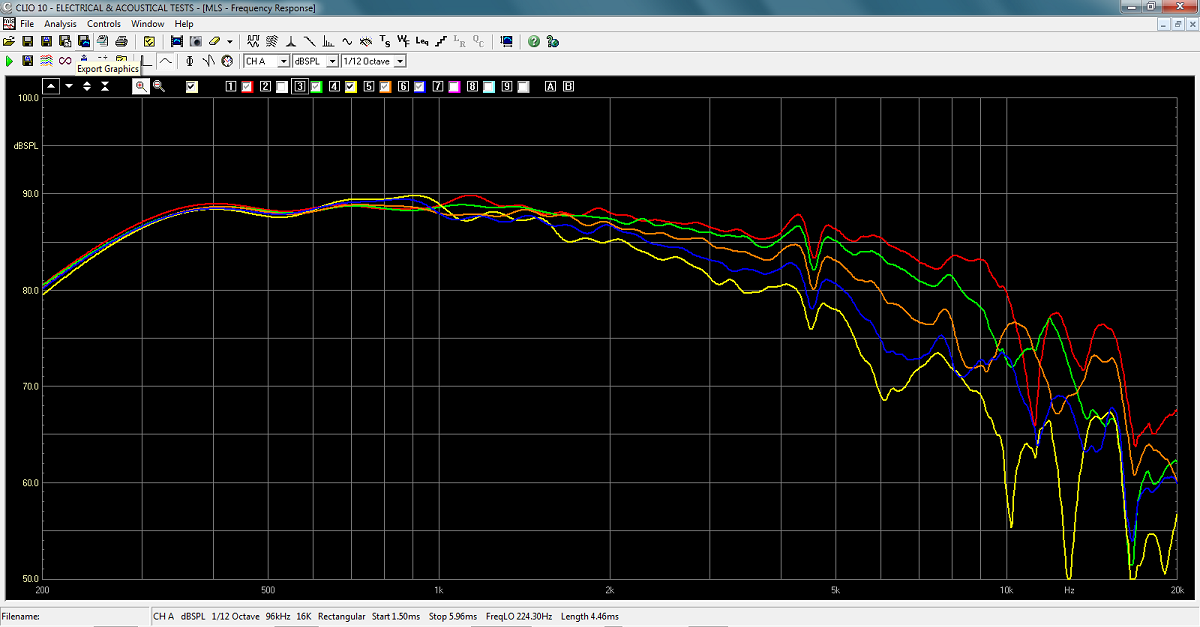
Above horizontal dispersion @ 0, 10, 20, 30 and 40 deg, off-axis. Measured at 0.5 meter distance, normalised for 1 meter, 2.8 volts. With an assumed point of crossover around 3 kHz, this is just excellent.
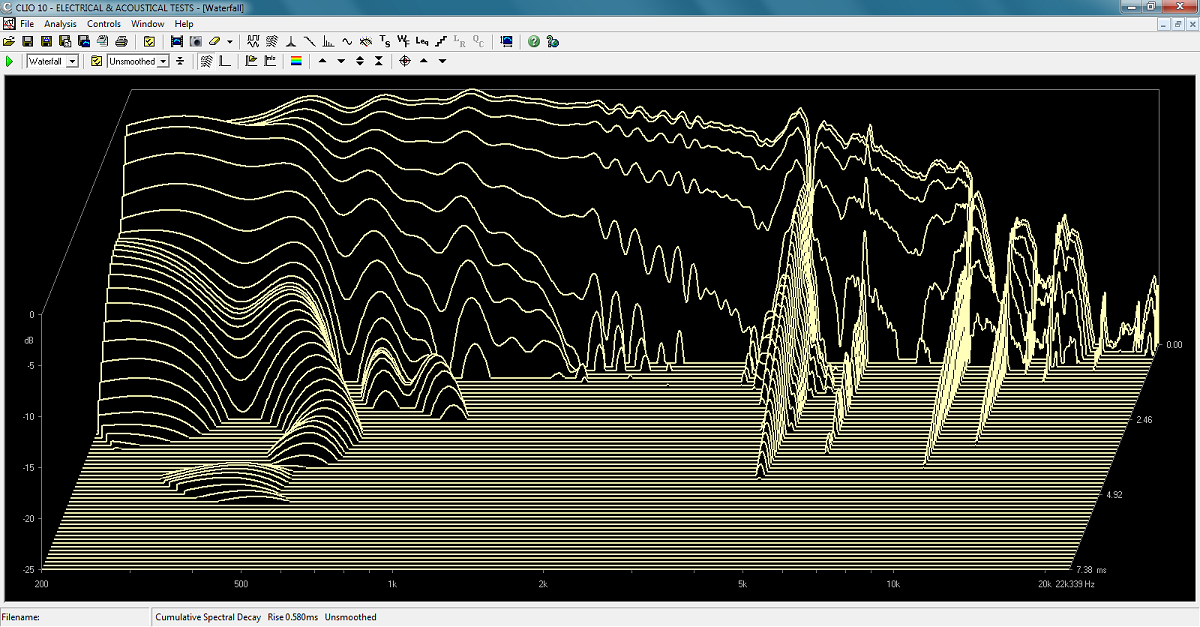
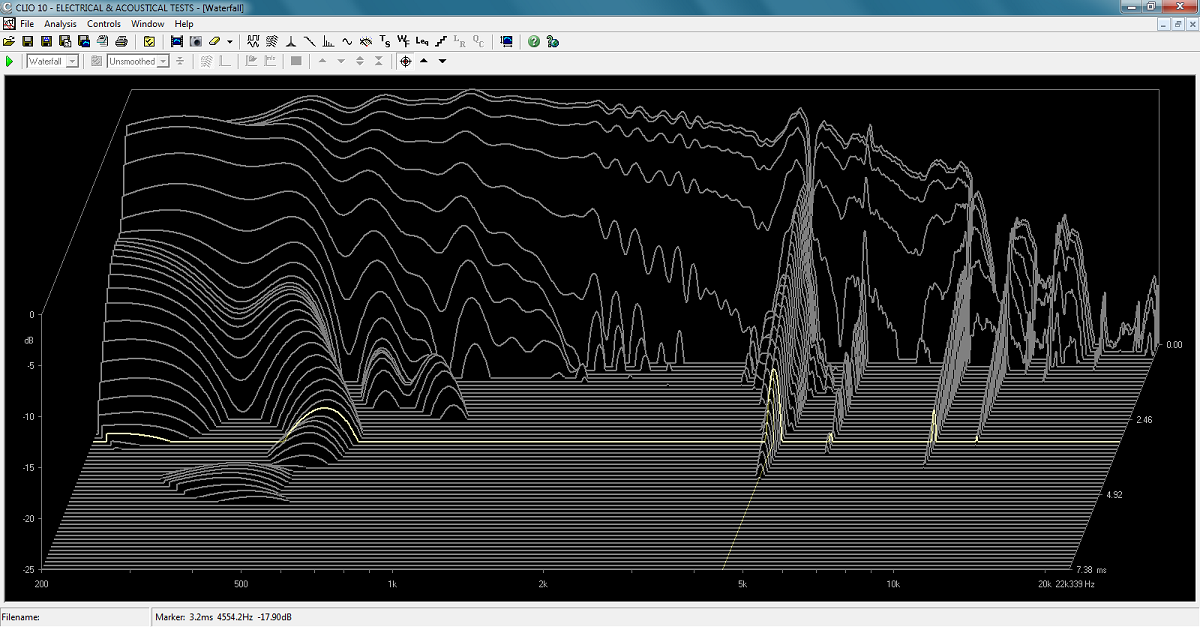
Above cumulative spectral decay. The lower plot displaying the resonance at 4550 Hz, not something that should bother even with a 2nd order point of crossover at 3 kHz.
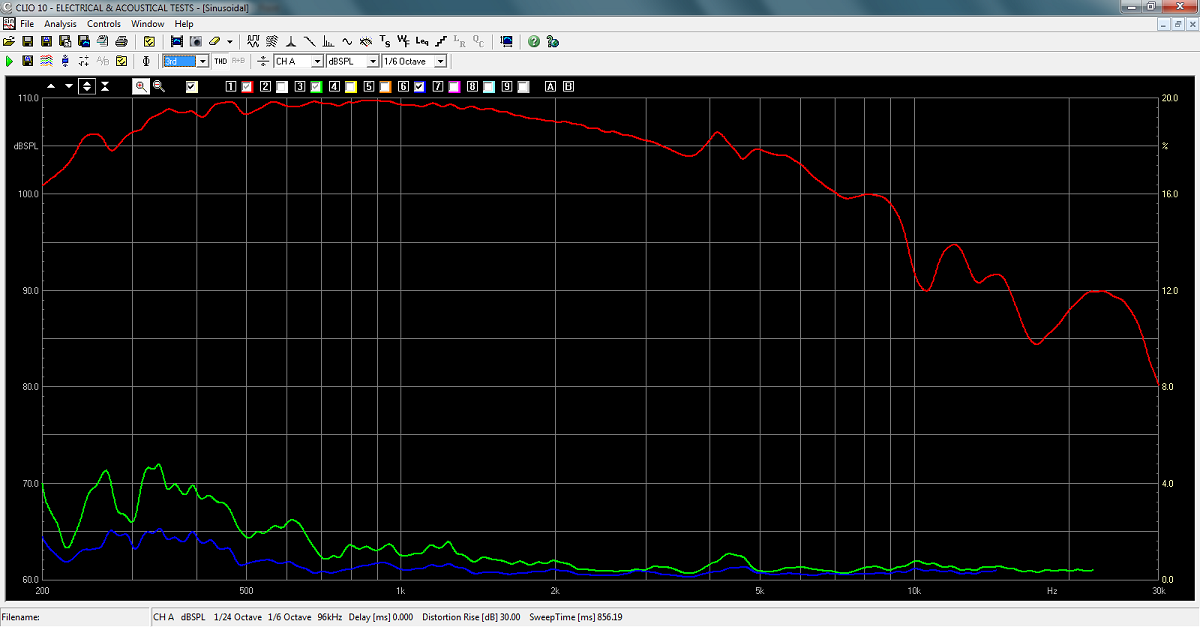
Distortion measured at 2.8 V input. This dome should be well suited down to 400 Hz. Green is 2nd and blue is 3rd.
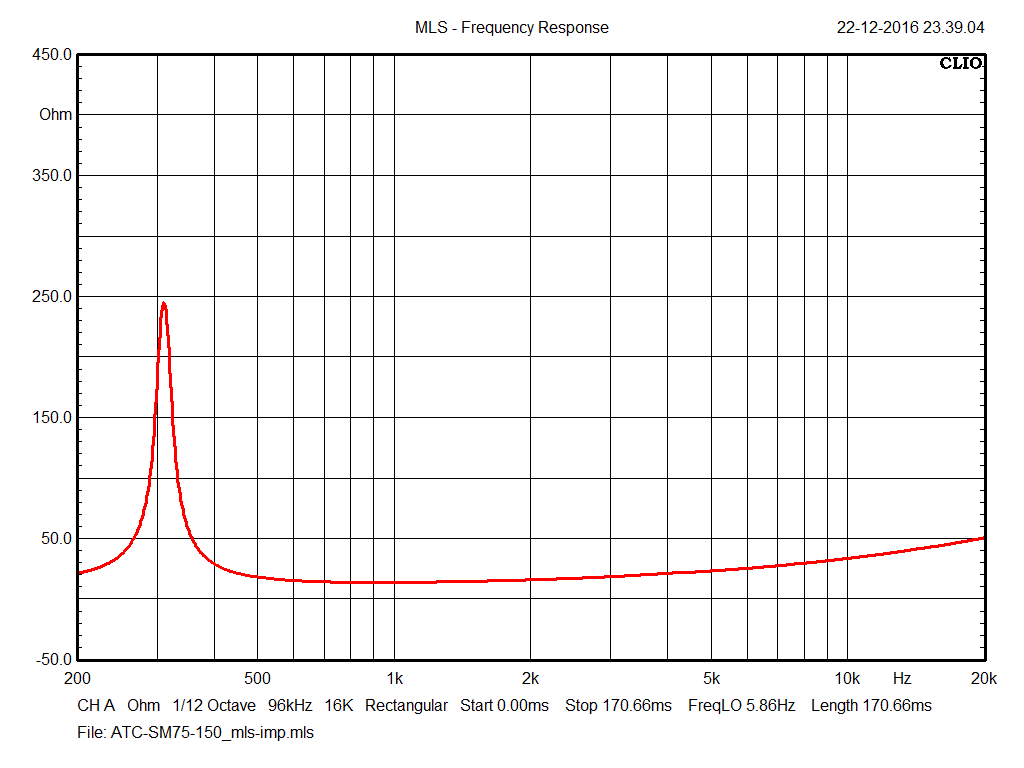
Above impedance plot displaying a huge peak at 320 Hz. Not a trace of unrest from 400 to 20000 Hz. Let's expand this graph some closer scrutiny.
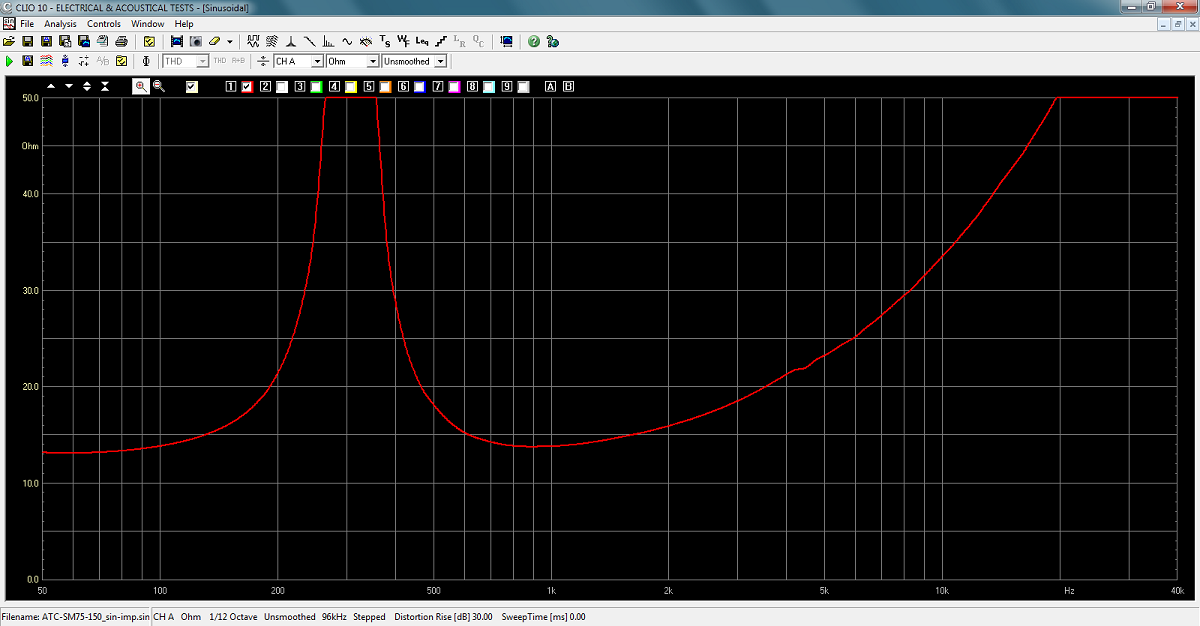
Above impedance plot with a 50 Ohm scale. Still very smooth with only a small glitch around 4550 Hz. Apparently no symmetric driver is incorporated here to reduce impedance rise towards higher frequencies.
TS data retrieved from the impedance plot. Hard to do a full test from either added mass or added volume.
Just for fun I modeled my AudioTechnology 3WC with the ATC dome. Piece of cake really! Wonder how it would sound.

Above the midrange crossover based on simulation.